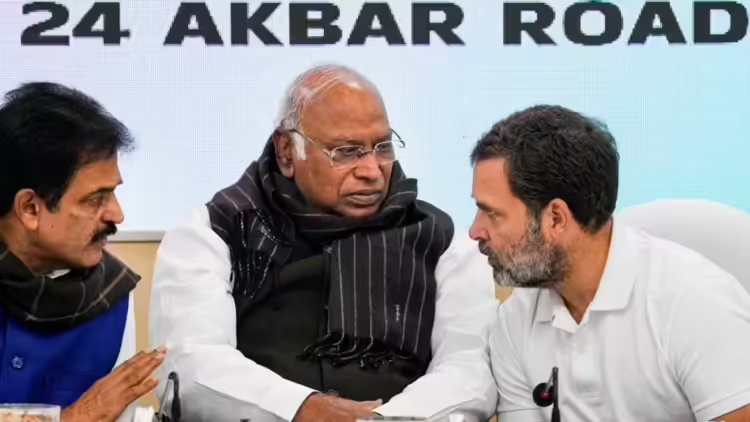Marginalization or winnability? Why did the Congress decide to run for the smallest number of Lok Sabha seats ever
The Indian National Congress will run for around 330 seats in the Lok Sabha, which will be the first Lok Sabha elections held in the history of independent India. This is the party’s lowest total of seats it has ever run for in a general election. The Congress has justified this historic action by referring to it as the same successful plan that it used to overthrow the National Democratic Alliance in 2004. At that time, it has challenged 417 seats, which was its lowest total.

“Take my word for it—the circumstances in 2004 and 2024 were the same. The Congress national secretary in charge of media, Jairam Ramesh, said, “We have purposefully chosen fewer seats because we wanted to form a strong alliance and a clear verdict in these elections for the Congress and INDIA bloc.”
It seems that the choice to run from fewer seats has also strained relations among members of Congress. One such instance was the harsh bargaining tactics used by the Shiv Sena (UBT) in Maharashtra. Another notable case where the Congress did not get the seats it desired was Bihar, where it is allied with the Rashtriya Janata Dal. In Uttar Pradesh, where the Samajwadi Party secured the majority of the seats, a similar outcome was seen.
The development is more indicative of its declining status as the Opposition’s “big brother” than it is of a plan. This loss of negotiating leverage was made worse by the Congress’s disastrous performance in the Hindi heartland during the November–December assembly elections of the previous year. Despite being publicly prodded by allies in India, the Congress continued to postpone seat-sharing negotiations in the hopes of obtaining the upper hand in negotiations after winning seats in MP, Chhattisgarh, and Rajasthan.
In contrast, the party was further marginalized as a result of its losses in the heartland, which compelled it to adopt a survival tactic in order to keep its friends from turning against it. West Bengal Chief Minister Mamata Banerjee threatened to leave the coalition before seat-sharing negotiations began. Congress eventually had to make do with fewer state seats as the days went by.
Due to the Congress’s inaction, the Samajwadi Party in Uttar Pradesh unilaterally announced their list of candidates before days later offering the Congress lesser seats. In Maharashtra, the Shiv Sena (UBT) used a similar tactic, leaving the state unit leaders of the Congress angry that the party had sacrificed several important seats to its partner. As the party formed coalitions with the Aam Aadmi Party in Delhi, Haryana, and Gujarat, its overall number of members decreased even further.
Nonetheless, the Congress is certain that giving in to allies would increase its prospects of winning against the BJP. The party acknowledges that this is an important Lok Sabha election that will determine not just the future of Indian democracy but also the standing of the Opposition. At the core of this strategy, however, is the Congress’s increasing recognition of its ever-restricting territory and the need of forming coalitions to keep its presence in places where it was once the undisputed leader.
Since 2014, the ascent of the BJP led by Narendra Modi has coincided with the decline of the Congress, particularly in states that hold a significant number of Lok Sabha seats, such as Uttar Pradesh, Maharashtra, Bihar, Andhra Pradesh, and West Bengal. The Congress may need to reconsider its strategy if the consequences of its less-is-more doctrine turn out to be unfavorable by June 4.







